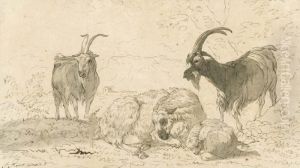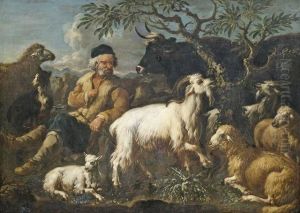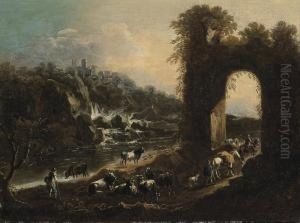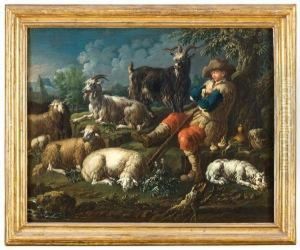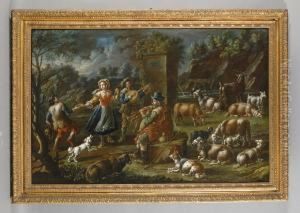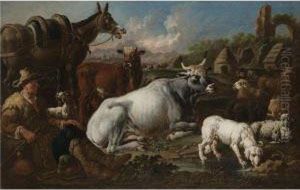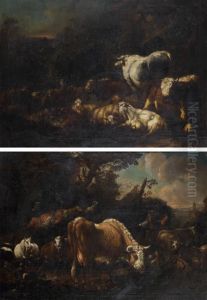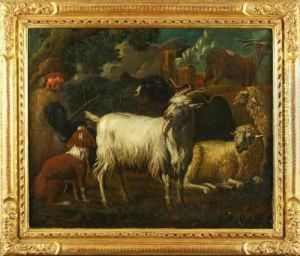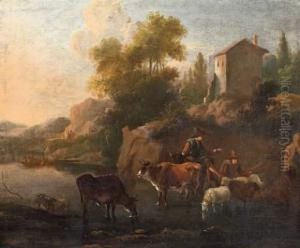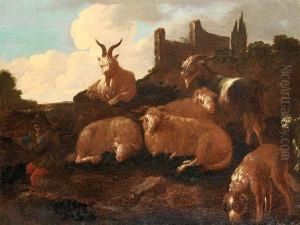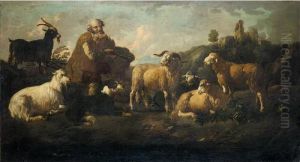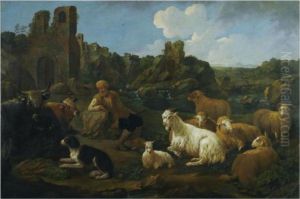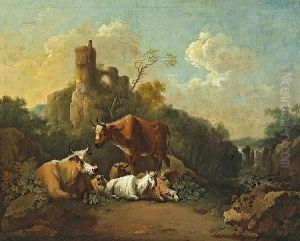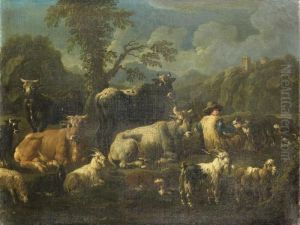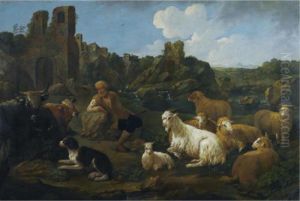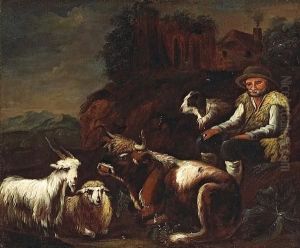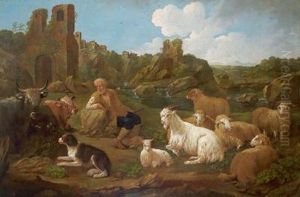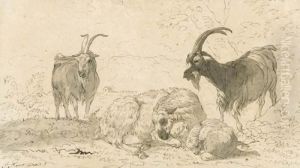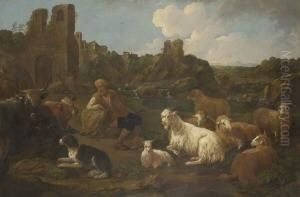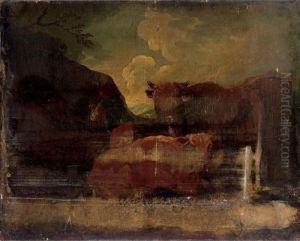Jakob Roos Paintings
Jakob Roos, also known as Jacob Ruisch or Jacob Philipp Roos, was a German Baroque painter who specialized in animal paintings, particularly depicting livestock. Born in Frankfurt am Main in 1639, he was a part of the Roos family, which included several notable painters of the time. His father, Philipp Peter Roos, known as Rosa da Tivoli, was also a distinguished painter who had a significant influence on Jakob's artistic development.
Jakob Roos received his early training from his father and was deeply influenced by his father's style and subject matter, often focusing on the pastoral scenes and animal studies that were his father's specialty. His works are characterized by a naturalistic approach to the animals he painted, often set against a backdrop of Italianate landscapes, a nod to his father's time spent in Italy, which had a lasting impact on the Roos family's artistic style.
Despite living in the shadow of his father's reputation, Jakob Roos managed to establish a career for himself, and his paintings were appreciated for their own merit. His ability to capture the texture of animal fur and the liveliness of the creatures he depicted earned him recognition among patrons and collectors of the time.
Jakob Roos' work was part of the larger Baroque movement that was prevalent in Europe during the 17th century. This period was known for its dramatic use of light and shadow, a technique that Roos employed to give his animal subjects a sense of volume and presence. He often painted cattle, sheep, and goats, imbuing them with a sense of dignity and tranquility that was well received by his contemporaries.
Sadly, his career was relatively short as he passed away in 1686, at the age of 47. Although not as widely known as some of his peers, Jakob Roos' contributions to the genre of animal painting have been acknowledged by art historians, and his works can be found in various art collections and museums across Europe. His legacy continues through the works of his family and those he influenced during his lifetime.
